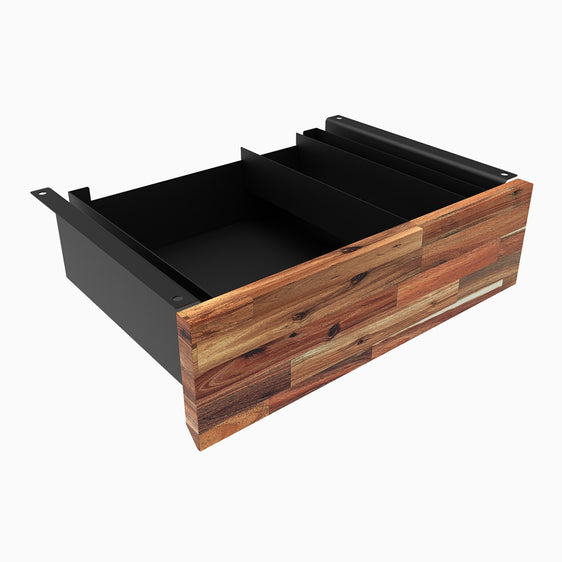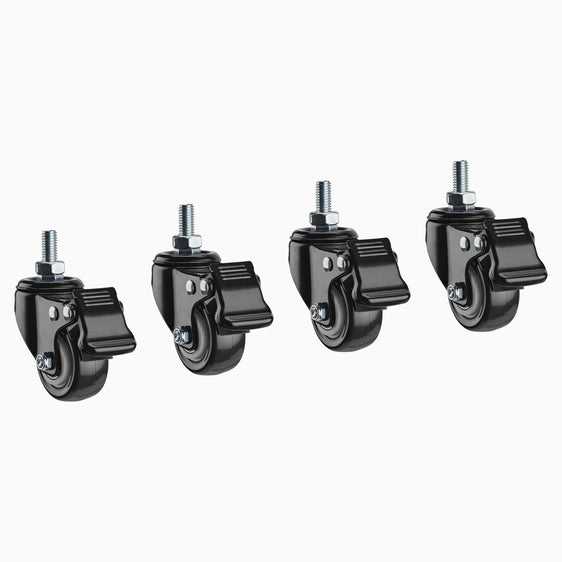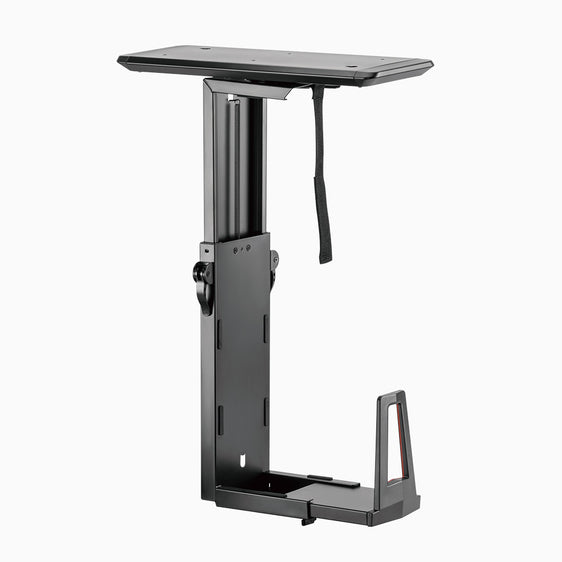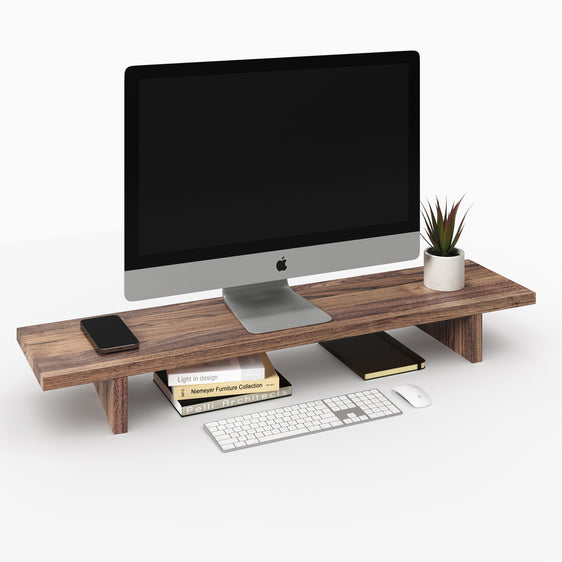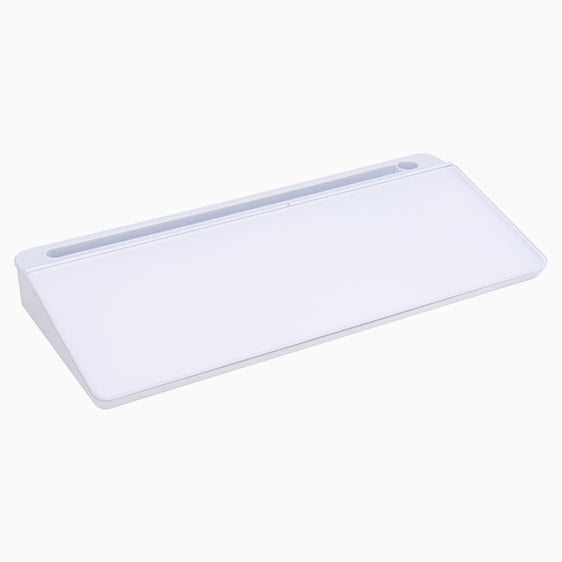Desk Height Calculator
Are you suffering from back pain from long hours of sitting at your desk? The use of height-adjustable desks can improve your health and help ensure you sit in an ergonomic position. Our desk height calculator will help pick the perfect sitting and standing desk height for your new standing desk, in proportion to your height. By using our standing desk height calculator, you will be able to achieve an optimal sitting position.
Standing Desk Height Calculator
Now that you've gotten a better understanding of how stand up desks work, how do you set it up to reap the full benefits of your office ergonomics? We've come up with a height assessment tool for your desk that will help you find the suitable range which your chair, desk, and monitor height should be at.
Simply choose between two working positions - sitting or standing - and enter your height. You'll then be able to see the recommended height range for your chair, desk, and monitor.
Using Our Desk Height Calculator
Here's how to use our height range calculator to find your ergonomic desk height:
- Begin by keying in your height. Don't forget to include the height of the heels or soles of the shoes you wear most often. Shoe height may add several centimetres to your standing height as well as affect your optimal ergonomic chair height.
- Next, choose your working position, either sitting or standing, and the calculator will give you suggested height ranges for optimal comfort. Make these adjustments to your chair, desk and monitor and you'll be set!

Recommended Ranges:
* Chair height: 41 - 45.5 cm
Your thighs and feet should be parallel to the floor (thighs and lower legs forming 90-110° angle)
* Desk height: 63.5 - 70 cm
Your elbows and underarms should lie straight on the table. Make sure there is a 90-110° angle at the elbow
* Monitor height: 118.5 - 122.5 cm
Looking straight, you should be looking at the top third of the screen.
Remember that every body is unique and these ranges should serve as a starting point. Adjust the table height to one that's most comfortable to you.

Recommended ranges:
* Desk height: 90 - 97 cm
Put your hands on the keyboard and check an angle at your elbow - it should be around 90-110°.
* Monitor height: 139 - 143 cm
Looking straight, you should be looking at the top third of the screen.
Remember that every body is unique and these ranges should serve as a starting point. Adjust the table height to one that's most comfortable to you.
Tips To Adjust Your Chair, Desk and Monitor Heights

Chair Height
Do check your posture to ensure that your thighs and lower legs should form a right angle with each other while your two feet are flat on the floor next to each other.
Desk Height
Remember that your elbows and underarms should lie straight on the table with loosely hanging upper arms. Try to have a 90-110° angle at the elbow. Sitting elbow height should be parallel with desk height.
Monitor Height
Looking straight, your eye height should ensure that you are looking at the top third part of the screen. Your monitor should be tilted slightly to an angle of 10-20°. Not many people know that laptops are not made for permanent work at the desk. The laptop screen is too low and cannot be adjusted to the correct angle. You may want to consider using a laptop stand to place the laptop in a better position.
Be mindful that our bodies are all unique and these measurements should be used as a guideline to get you started. Always adjust your table height and eye height to one that is most comfortable for you in order to achieve the most ergonomic workstation. An adjustable monitor arm can also ensure that your monitor is at the optimum standing eye height for perfect posture.
Standard Desk Height For Home Office Setup
Are you wondering what the standard desk height is for a desk in the USA? The standard office desk height is between 28 and 30 inches tall. However, this standard height for desks is only suitable for people around 6 feet tall. The average desk user who isn't 6 feet tall tends to reposition themselves in a sub-optimal sitting position, often slouching forward, not to mention harming their bodies and causing back pain in the long run.
What Is A Comfortable Desk Height?
As mentioned above, our helpful calculator provides the recommended height range for you to achieve the healthiest and most comfortable desk height. The measurements don't take into account individual differences as people of the same overall height may have slightly different neck length, torso length, forearm length, upper arm length, etc. which leads to differences in standing eye height, seat height and elbow height.
A foolproof way to see if you are using the proper height for your sit stand desk is to make sure that your desk surface and keyboard are both at your sitting elbow height when you’re seated at your desk (or standing at a stand-up desk). When you are using your desk optimally, your seat height should ensure that your shoulders are relaxed with your forearms bent at an approximate right angle.
What Is The Most Ergonomic Way To Sit At A Desk?
We strongly recommend sit stand desks or an adjustable desk workstation for those who are looking to improve ergonomics and comfort when it comes to working at a desk for long hours. Adjustable office chairs that are ergonomic are also a must in order to have adequate lumbar support. Given the long duration we spend sitting at our desks, ergonomic desk height is really not something that should be neglected. You might feel that you're comfortable, but the truth is, many of our habits when it comes to sitting at our desks can actually have long-term health implications. Extended sitting time and poor posture cause back pain and spinal problems, which if left unchecked can develop into chronic conditions. And sedentary lifestyles combined with long work hours can cause diabetes, stroke, heart disease and early death.
In addition to using our desk height calculator, we have some tips below which can help you find the most ergonomic way to sit at your desk.
- To begin with, make sure there is clearance under the desktop so you can move your legs freely, without banging your knees.
- You may consider adding a keyboard tray to your desk. This allows you more flexibility in adjusting your sitting posture, so you can get into proper working position (shoulders relaxed and forearms roughly parallel to the floor). Don't neglect your keyboard position - it can lead to carpal tunnel syndrome and strain your wrists from typing.
- Use monitor arms or risers to position your computer monitor (or laptop screen) at a level just 2 or 3 inches below your eye height to avoid neck pain and eye strain.
Looking for more info on ergonomic sitting positions? See our guide on how to sit at a computer the right way.
Are Height Adjustable Desks Worth It?
Remaining in one position, even if it's ergonomically correct, can have a negative impact on one's overall health. Experts recommend that you should alternate between sitting and standing throughout your workday to avoid circulatory problems and other health issues. A sit stand desk allows you to change your position at any point of your workday. This variation in position boosts concentration and circulation in the body, among other benefits of standing desks.
Ready to purchase a sit stand desk? Choose from Desky's range of adjustable standing desks and select the desk that best fits your workspace and needs.

